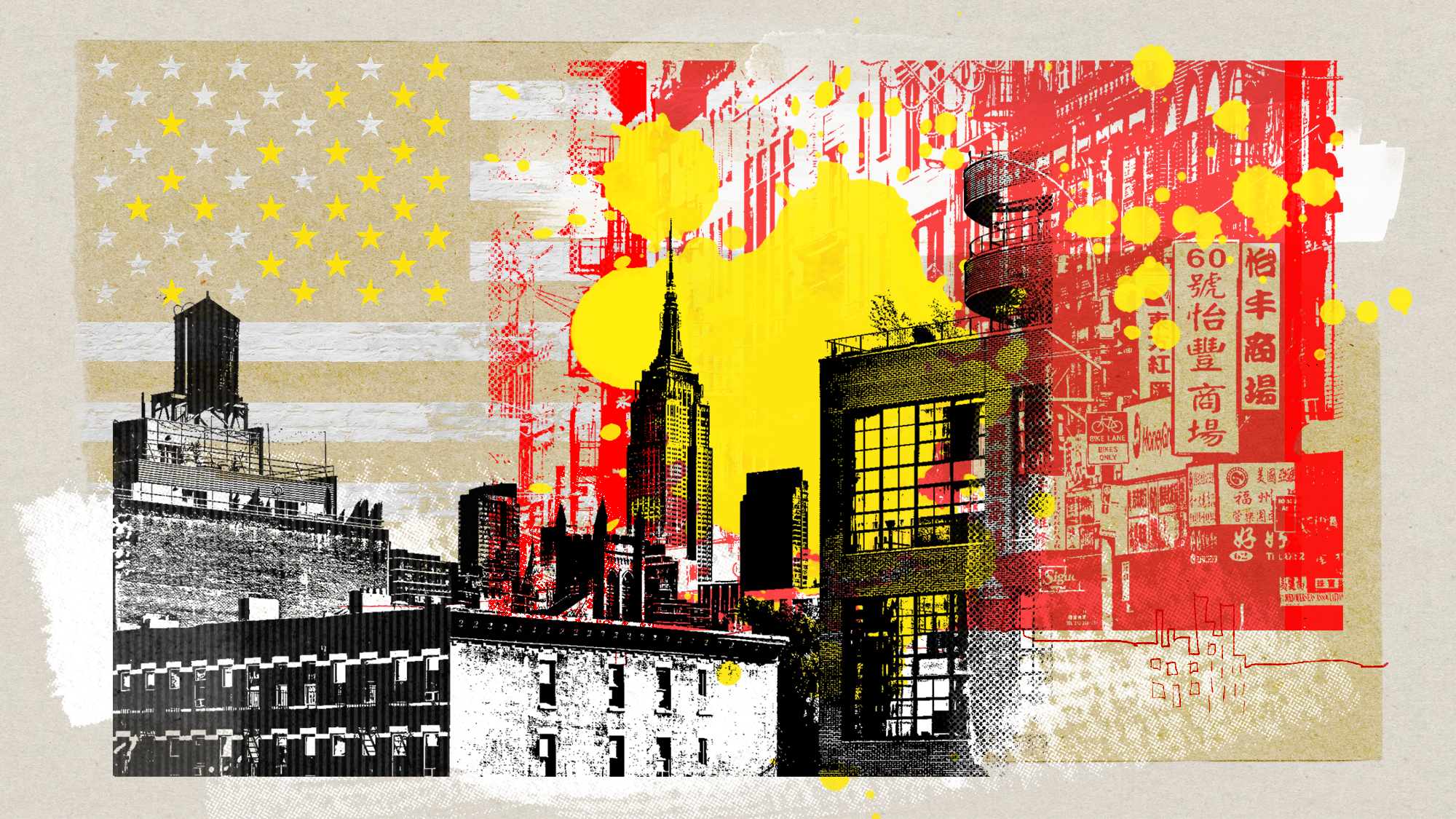The decline and fall of Europe’s centre-left
It’s not just Labour that’s in trouble: across the continent, once-mighty social democratic parties are in crisis

How dominant was the centre-left?
From 1945 to 2000, social democratic and labour parties on the centre-left played a vital role in nearly every democracy in Europe, either as the government or, more often, the main opposition. They advocated moderate socialist policies: a strong welfare state, high taxes, income redistribution, and a mixed economy (largely capitalist, but with state-controlled elements). Balanced out by those of the centre-right, these policies created a remarkable period of economic growth and social stability, harnessing the market but protecting workers from its destabilising effects. After the fall of communism, centre-left parties shifted to the right somewhat, but the late 1990s were still a high point for social democracy: Tony Blair in the UK, Lionel Jospin in France and Gerhard Schröder in Germany were Europe’s pre-eminent politicians.
What has happened since?
The Week
Escape your echo chamber. Get the facts behind the news, plus analysis from multiple perspectives.

Sign up for The Week's Free Newsletters
From our morning news briefing to a weekly Good News Newsletter, get the best of The Week delivered directly to your inbox.
From our morning news briefing to a weekly Good News Newsletter, get the best of The Week delivered directly to your inbox.
Since the turn of the century, many of these parties have collapsed. Of the EU’s 27 states, only six – Portugal, Spain, Denmark, Sweden, Finland and Malta – now have centre-left governments. In France, the Socialist Party went from 38% of the vote in the 1997 National Assembly elections to a mere 6% in 2017. In Germany, the Social Democratic Party gained 41% of the federal vote in 1998, but only 21% in 2017.
In the Netherlands, the Labour Party took nearly a quarter of the vote in 2012, but lost three-quarters of its seats in 2017. In Italy, the Democratic Party is now a junior partner in a government dominated by new populist groups. Austria’s Social Democrats have collapsed. But the most dramatic example is Greece’s Pasok, the main centre-left party, which went from 44% of the vote in 2000 to 5% in 2015. Hence, the phenomenon is sometimes known as “Pasokification”.
Why has Pasokification occurred?
All mainstream parties have seen a hollowing out of their support over the past 50 years: voters are much less likely to maintain a lifelong, class-based political affiliation today. However, centre-left parties have been more affected by this than centre-right ones. The industrial working class and the unions from which social democrats drew their support have substantially eroded; while, as Europe’s population ages, the electoral influence of older, more conservative demographics has grown. There’s also the question of ideology. In the 1990s, many centre-left parties moved away from their roots, adopting the “Third Way” positions popularised by New Labour, and making their peace with neoliberal economics: deregulation, privatisation, globalisation. While successful in the short term, in the long run this made them less distinct from conservative and liberal parties. This weakness was exposed by two phenomena: the surge of immigration from both inside and outside Europe, particularly during Syria’s civil war; and the banking crisis of 2008 and the long ensuing recession.
A free daily email with the biggest news stories of the day – and the best features from TheWeek.com
How was this weakness exposed?
In 2008, Pasok, like other left-wing ruling parties, was forced to implement the policies being adopted across the West: bailing out the banks and imposing austerity measures that largely affected the poor. As a result, Pasok lost voters to the populist far-left–the anti-austerity Syriza party – and, to a lesser extent, to the far-right, represented by the ultra-nationalist Golden Dawn. This process varied from nation to nation, but it’s remarkable how often the pattern was repeated across Europe. In Germany, there was Alternative für Deutschland to the right, and the Greens and Die Linke to the left; in France, the Front National to the right, and groups like La France insoumise on the left; in Spain, Podemos on the left, and Vox on the right.
But why did the centre-left suffer more than the Right?
These tensions – and immigration in particular–pulled apart the voter coalitions that had sustained the social democrats for decades: between the socially liberal, educated middle classes – dubbed the “Brahmin Left” by the French economist Thomas Piketty – and the working classes, who tend to be more socially conservative, and more threatened by immigration and globalisation. It’s a tension that the British journalist David Goodhart has described between the mobile “anywheres” and the left-behind “somewheres”. The centre-right certainly lost voters to the populist Right, but it wasn’t being simultaneously attacked on both fronts. And after a brief far-left surge subsided, conservative parties have tended to be the last man standing: in Greece, Syriza was swept aside by the centre-right New Democracy in 2019.
How have the remaining social democrats survived?
Successful leaders have either tacked clearly to the left, or the right. The Spanish Socialist Workers’ Party has formed a “progressive coalition” with Podemos and other far-left groups. In Portugal, the Socialist Party has ruled in a minority government since 2015, with the support of Greens and Communists in parliament. By contrast, the Danish Social Democrats have held onto power by combining a really tough approach to immigration with strongly left-wing welfare and climate policies. Is the centre-left doomed? Some have suggested that social democratic parties might go the same way as the liberals in the mid-20th century, surviving only as a rump. That seems unlikely. They still have a strong base among public sector and poorly paid service sector workers; unions still exert considerable influence. Social democratic values – bridging the gap between market capitalism and workers’ desire for stability – are as relevant as ever. Arguably more so, given the growth of insecure, zero-hours contract labour, and income inequality having risen substantially. But the message of the past 20 years is that, if they have neither a solid voter base nor a clear ideological identity, social democrats face a difficult future.

Labour: the way forward
Britain’s first-past-the-post electoral system is famously inhospitable to new political entrants, so there have been fewer waves made by insurgent parties here. However, Labour has, like many of its sister parties, faced an attack on two fronts: first UKIP and then the Tories under Boris Johnson took a chunk out of its vote in England and Wales; while in Scotland, the SNP has supplanted it as the social democratic option. And under the leadership of Jeremy Corbyn, Labour faced a brief, but internal, far-left insurgency. As in much of Europe, that also proved short-lived. Today, there are three main groupings in Labour: the Corbynites, a still-strong Blairite wing, and the socially conservative “Blue Labour” tendency. Each wing has a different prescription for solving Labour’s problems. The tricky question of whether to ally with the Lib Dems and the Greens is often mooted. However, there are clear opportunities ahead for the party: it’s still strong in the big cities, and young liberal voters, chased out by high house prices, are spreading into the suburbs and smaller cities, changing the political balance in previously true blue areas. The question, as ever, is how Labour can engage this younger base while building a movement with a broader appeal.
-
 Femicide: Italy’s newest crime
Femicide: Italy’s newest crimeThe Explainer Landmark law to criminalise murder of a woman as an ‘act of hatred’ or ‘subjugation’ but critics say Italy is still deeply patriarchal
-
 Brazil’s Bolsonaro behind bars after appeals run out
Brazil’s Bolsonaro behind bars after appeals run outSpeed Read He will serve 27 years in prison
-
 Americans traveling abroad face renewed criticism in the Trump era
Americans traveling abroad face renewed criticism in the Trump eraThe Explainer Some of Trump’s behavior has Americans being questioned
-
 Nigeria confused by Trump invasion threat
Nigeria confused by Trump invasion threatSpeed Read Trump has claimed the country is persecuting Christians
-
 Sanae Takaichi: Japan’s Iron Lady set to be the country’s first woman prime minister
Sanae Takaichi: Japan’s Iron Lady set to be the country’s first woman prime ministerIn the Spotlight Takaichi is a member of Japan’s conservative, nationalist Liberal Democratic Party
-
 Russia is ‘helping China’ prepare for an invasion of Taiwan
Russia is ‘helping China’ prepare for an invasion of TaiwanIn the Spotlight Russia is reportedly allowing China access to military training
-
 Interpol arrests hundreds in Africa-wide sextortion crackdown
Interpol arrests hundreds in Africa-wide sextortion crackdownIN THE SPOTLIGHT A series of stings disrupts major cybercrime operations as law enforcement estimates millions in losses from schemes designed to prey on lonely users
-
 China is silently expanding its influence in American cities
China is silently expanding its influence in American citiesUnder the Radar New York City and San Francisco, among others, have reportedly been targeted


